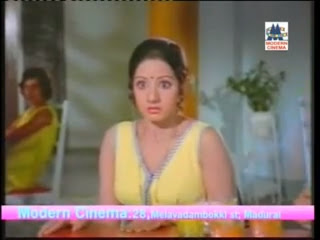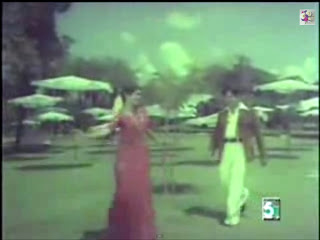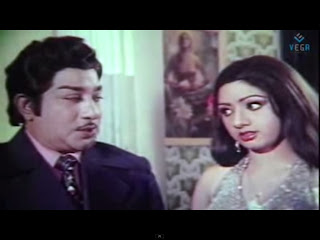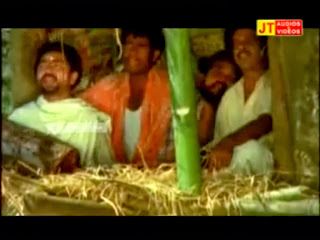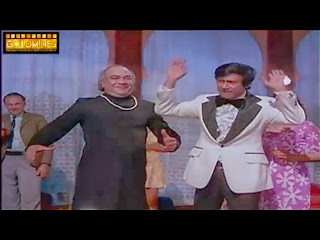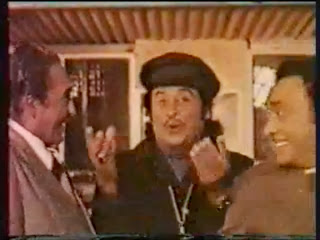India’s Prime Minister-Dr.Manmohan Singh is said to be a reluctant traveler.
However, as the Prime Minister, (for a consecutive 2 Terms in UPA I and UPA II) he could not avoid international trips, as the country’s situations demand for the international trips of the Prime Minister.
So, Dr.Manmohan Singh has so far had
73 International trips from the year 2004 to the year 2013 till date.
The expenditures for Dr.Manmohan Singh’s International trips is said to be more than
Rs 650 Crores in the past 10 years.
By perusing the list of his international trips, Dr.Manmohan Singh you may tend to call him a
“Non-Resident Prime Minister of India”.
Most of the Prime Minister of India' s international trips, such as to attend
“Summits” and “UNO” Meets are unavoidable.
The main criticism about Dr Manmohan Singh's International Trips are that , out of about 40 International trips of Dr.Manmohan Singh, in his UPA II tenure, more than 15 international trips have been
during the time of the Indian Parliamentary sessions. The following is a List of International Trips undertaken by the Indian Prime Minister, Dr.Manmohan Singh from the year 2004 to the year 2013 (Till Date-As of now he is in his Russia and China Trip from 20th October 2013 to 24th October 2013)Year and Number of Trips/City/Country/Purpose and Duration of Visit2004/4:
1. Bangkok/Thailand/29th July 2004- 31st July 2004
2. London/United Kingdom-/19th September 2004- 26th September 2004
3. Hague/Netherlands-Representing India-in the 5th India-
European Union Summit/EU/ 7th November 2004- 10th November 2004
4. Vientiane/Laos / Representing India in the 10th
ASEAN Summit/28th November 2004 - 30th November 2004
2005/11:
1. Mauritius/Mainly to inaugurate an 11-storeyed state-of-the-art Cyber Tower, built with Indian assistance/ 30th March 2005- 2nd April 2005
2. Jakarta/Indonesia/to attend
Asia-Africa Summit / 22nd April 2005 -24th April 2005
3. Moscow/Soviet Russia/ to participate in the VE Day /Victory in Europe Day/Victory Day Celebrations / 8th May 2005 - 10th May 2005
4. Auchterarder/ Scotland, United Kingdom/To attend the 31st
G-8 Summit hosted by the British Prime Minister Tony Blair held at the Gleneagles Hotels /6th July 2005 - 9th July 2005
5. Washington/United States of America/USA /in response to the invitation from the President of the USA, George W Bush/16th July 2005- 21st July 2005
6. Kabul/Afghanistan/28th August 2005 - 29th August 2005
7. New York/USA/ to attend the
United Nations Organization's /UNO's General Assembly/11th September 2005 - 15th September 2005 And to France on 15thSeptember 2005 on his way back home from New York
8. Dhaka/Bangladesh/To attend the 13th South Asian Association of Regional Cooperation/
SAARC Summit / 11th November 2005- 13th November 2005
9. Moscow/ Russia/ 4th December 2005 - 7th December 2005
10. Kuala Lumpur/Malaysia/2005- to attend the first
Indo-ASEAN Summit held on 14th December 2005 /11th December 2005- 14th December
11. Germany and Uzbekistan /22nd April 2006- 26th April 2006
2006/7:
1. St. Petersburg /Russia /to attend the Outreach Session of
G-8 Summit/16th July 2006- 18th July 2006
2. Brazil and Cuba/10th September 2006- 18th September 2006
3. In Brasilia/ Brazil /attended the
Trilateral Summit of India, Brazil and South Africa/IBSA /In the
14th Non-Aligned Movement/NAM Summit held at Havana, Cuba
4. Dr Manmohan Singh had talks with the President of Pakistan, Parvez Musharraf and decided to resume the composite dialogue process between India and Pakistan which was on hold since July 2011 Mumbai blasts
5. Johannesburg/ South Africa/30th September 2006 - 3rd October 2006
6. London/United Kingdom /in response to the invitation of the Prime Minister of the United Kingdom Tony Blair And Helsinki, Finland/ to attend the
7th India-EU Summit /9th October 2006-14th October 2006
7. Japan/ A Joint Statement ‘Towards Japan-India Strategic and Global Partnership’ was signed by the Indian Prime Minister Dr Manmohan Singh and the Japan’s Prime Minister Shinzo Abe/13th December 2006 - 16th December 2006
2007/6:
1. Cebu/ Philippines / To attend the
5th ASEAN-India Summit and the
2nd East Asia Summit/13th January 13, 2007 -15th January 2007
2. Berlin/Germany /To attend
G 8 Summit held at the Baltic resort of Heiligendamm /6th June 2007- 9th June 2007
3. Nigeria /in response to the invitation of the President of Nigeria Alhaji Umaru Yar Adua and to South Africa/ to attend the second
India-Brazil-South Africa /IBSA- Summit held at Pretoria on 17th October 2007/14th October 2007- 18th October 2007
4. Moscow/ Russia/ A visit according to the tradition of holding annual summit meetings between the heads of India and Russia/ 11th November 2007-13th November 2007
5. Singapore/ To attend the
6th India-ASEAN Summit and 3rd East Asia Summit/20th November 2007 - 21st November 2007
6. Uganda,/South Africa/To attend the Commonwealth Heads of Government meet/
CHOGM/ 22nd November 2007- 25th November 2007
2008/8:
1. Beijing/ China-/13th January 2008-15th January 2008
2. Bhutan/ addressed a joint session of the first elected Parliament of Bhutan/ 16th May 2008- 17th May 2008-
3. Japan/to attend the
G-8 Summit held at Toyako, island of Hokkaido/ 7th July 2008 - 9th July 2008
4. Colombo/ Srilanka/ to attend
SAARC Summit/ 1st August 2008-3rd August 2008
5. UNO, USA and France/ 22nd September 2008- 1st October 2008
6. Japan and China /for the
ASEM Summit/21st October 2008- 25th October 2008
7. Oman and Qatar/ 8th November 2008-10th November 2008
8. Washington/USA/ for
G-20 Summit/ 13th November 2008- 16th November 2008
2009/9:
1. United Kingdom /for
G-20 Summit/31st March 2009- 3rd April 2009
2. Russia/ to attend the
BRIC and SCO Summits/15th June 2009- 17th June 2009
3. Italy /to attend the
G8-G5 Summit/ 7th July 2009- 10th July 2009
4. France and Egypt/ for
NAM Summit-/13th July 2009-16th July 2009
5. Pittsburgh/ USA/ for the
G-20 Summit/ 24th September 2009 -25th September 2009
6. Thailand/ for the India-
ASEAN and EAS Summits/ 23rd October 2009- 25th October 2009
7. United States of America/USA, Trinidad and Tobago/ for
CHOGM/21st November 2009- 28th November 2009
8. Russia/ 6th December 2009- 8th December 2009
9. Copenhagen/ 17th December 2009 - 17th December 2009
2010/7:
1. Saudi Arabia/27th February 2010- 1st March 2010
2. USA/ for
Nuclear Security Summit and Brazil for IBSA and BRIC Summits/ 10th April 2010-17th April 2010
3. Bhutan/ for
SAARC Summit/ 28th April 2010- 30th April 2010
4. Canada/to attend the
G-20 Summit/ 25th June 2010- 29th June 2010
5. Japan, Malaysia and Vietnam/24th October 2010-30th October 2010
6. South Korea /10th November 2010- 12th November 2010
7. Belgium and Germany/9th December 2010 - 12th December 2010
2011/9:
1. China and Kazakhstan/12th April 2011 - 16th April 2011
2. Afghanistan / 12th May 2011- 13th May 2011
3. Ethiopia and Tanzania/23rd May 2011- 28th May 2011
4. Bangladesh /6th September 2011- 7th September 2011
5. South Africa/17th October 2011 – 19th October 2011
6. Cannes /for
G-20 Summit/2nd November 2011 – 5th November 2011
7. Maldives /9th November 2011 – 12th November 2011
8. Bali Islands/ for the
India-ASEAN and EAS Summits And to Singapore/ 17th November 2011 – 20th November 2011
9. Moscow /Russia/for the India - Russia summit/ 15th December 2011 – 17th December 2011
2012/5:
1. Republic of Korea /for the
Nuclear Security Summit /23rd March 2012 -27th March 2012
2. Myanmar/27th May 2012 – 29th May 2012
3. Mexico/ for
G-20 Summit And Brazil /for UN Conference on Sustainable Development/16th June 2012 – 23rd June 2012
4. Tehran for
NAM Summit/August 28, 2012 - August 31, 2012
5. Cambodia /for the
India-ASEAN Summit/18th November 2012 – 20 November 2012
2013/7:
1. Durban /South Africa/for the
BRICS Summit/25th March 25, 2013 – 29th March 2013
2. Germany/10th April 2013 -12th April 2013
3. Japan and Thailand/27th May 2013 – 31st May 2013
4. St. Petersburg/ Russia /to attend the
G-20 Summit/4th September 2013 – 7th September, 2013
5. USA/25th September 2013 – 1st October 2013
6. Brunei and Indonesia/ 9th October 2013 – 12th October 2013
7. Russia and China/ 20th October 2013 -24th October 2013
































